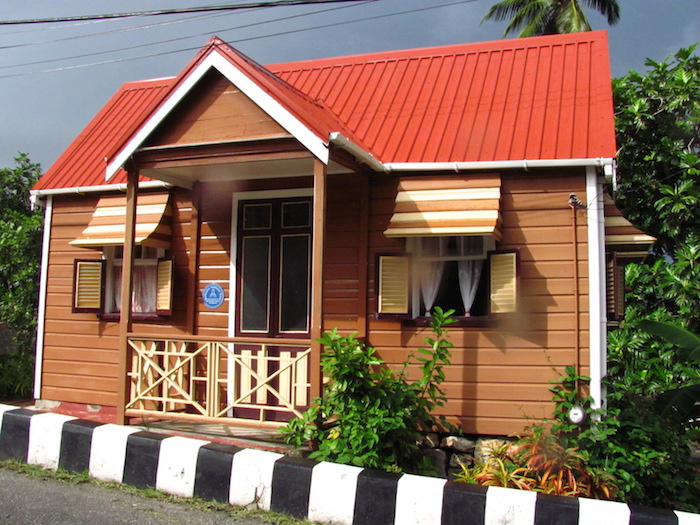
The Bajan Chattel House is as distinctly Barbadian as the local dialect and accent. It is a result of historical circumstances and local ingenuity.
After Emancipation, the slaves were still landless, since most of the land was owned by the plantations. But former slaves were subsequently allowed to build their humble homes on marginally productive plantation lands, paying very little rent. However, the plantation owners reserved the right to evict tenants from these tenantries at short notice in the event of a landlord-tenant dispute, or the worker quit.
The houses therefore had to be “chattel” which means “movable possession” and so these modest houses were built of timber, on foundations built with coral blocks, and constructed so they could easily be dismantled in sections, put onto a cart and moved to another spot.
The steep gable roof is most often constructed of corrugated iron and its angle deflects the wind rather than provides a platform for the wind to lift it off. The fretwork around the windows and openings provide shade and a filter against the rain. Over the years, fretwork has become an attractive architectural feature in its own right and is a distictive feature in West Indian housing design.
Today, even though most Barbadians live in more modern structures, there are still some who live in chattel houses. The architectural beauty still stands out today but the houses tend to be larger and more elaborate with sash windows and foundations made of concrete blocks instead of stones.
So, when you hear a Bajan saying he is moving house, he means …. literally, moving house!
